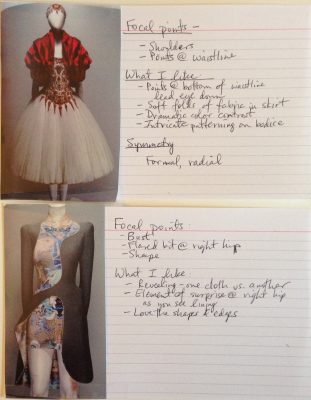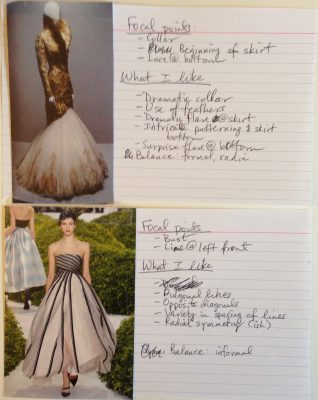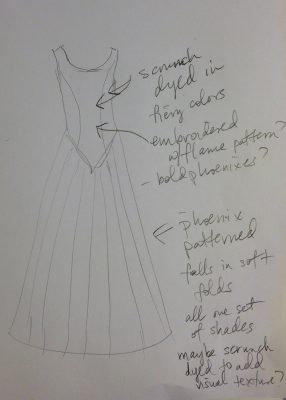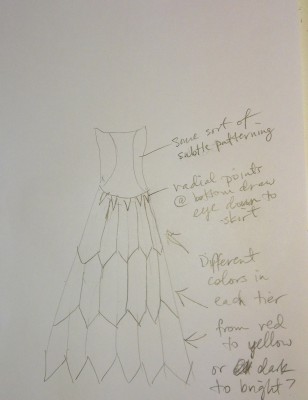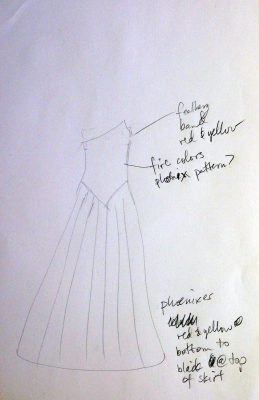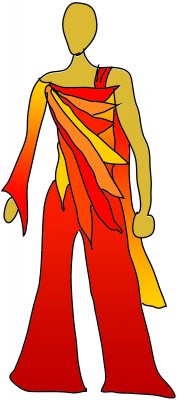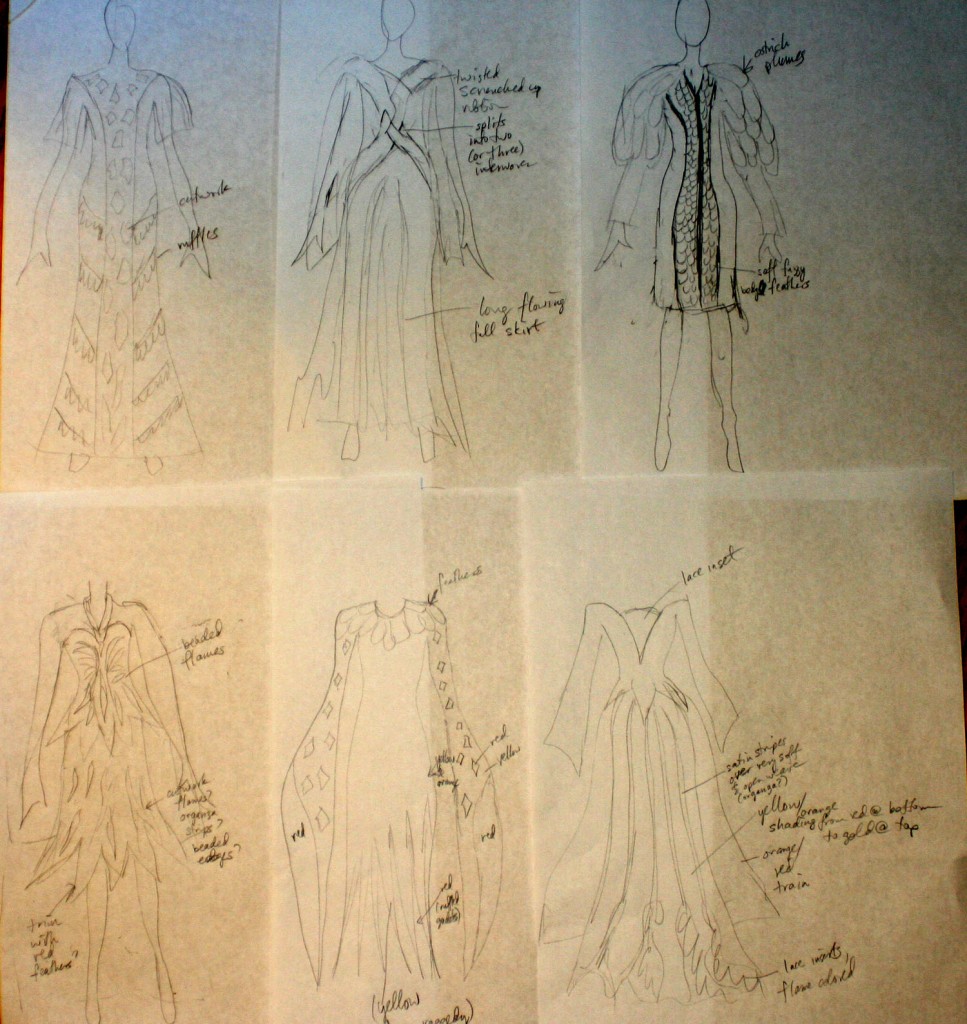Yesterday I decided to try something different: instead of designing around my phoenix fabric, I wanted to see what would happen if I just let my design ideas roam freely. I sketched out several designs, then photocopied the most interesting one several times and colored in the photocopies:
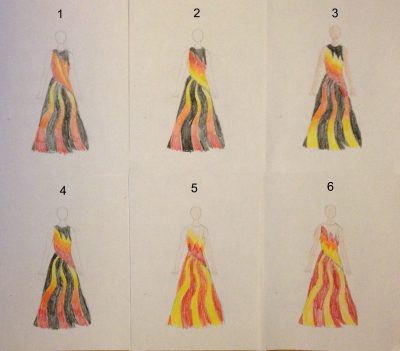
In #1, I was playing with diagonal lines across the bodice, but it didn’t work, mostly because it created visual confusion at the waist, where the converging diagonal lines on top met the radially symmetric lines on bottom. My eye doesn’t know where to go at the waist, which is bad.
Enter #2. Here I shaded the bottom but made the waist a solid color, shading back to red at the top. This is a really strong design, in my opinion; the yellow connects and unifies top and bottom, and the reflected color gradations make for nice rhythm. The one problem? The brightest color (yellow) and the highest contrast portion sits at the waist, emphasizing the waist and hips. That’s not where I want attention, at least on my figure.
#3 was an attempt to keep the unity at top and bottom without focusing attention in the center. It’s not as strong a design, however, because the two focal points (high contrast/brightest color) are now at top and bottom, leaving the eye feeling a little abandoned as it flips between the two. Also, I don’t want people focusing on my feet!
In #4, I wanted to see what happened if I kept the color gradation going in a single direction rather than flipping it. Unfortunately, it doesn’t work as well as #2; there’s still that jarring transition at the waist.
I wanted to see what happened if I eliminated the black, so I tried #5. It was ok – the flames at the top had potential – but I didn’t feel the red adequately unified the top and bottom – odd, since the red stripes meet the red torso bottom in the same proportion (theoretically, anyway) as the yellow stripes meeting the yellow torso bottom in #6. However, yellow is a more visually dominant color than red, so I think what’s happening is that the eye is traversing the yellow stripes in #5 and then crashing into the red of the torso. In #6, the eye travels up the yellow stripes, encounters the yellow bottom, and moves smoothly into the rest of the piece.
Verdict? #2 is definitely the strongest design of the set, at least in my opinion. If I were using it, though, I’d add some crystals or some lace at the top of the red flames on the bodice, to draw the eye up from the waist and give a focal point that isn’t the waist/hips. (Also, because the line of the dress flares at the hip, the waist looks thinner than it is, so it might work anyway.)
I don’t know that I’ll use this design – I really want to use the phoenix fabric and am not sure the curvy stripes would work well with the phoenix pattern – but working my way through multiple variations has really helped me understand what works and what doesn’t, especially with color gradations.
I’m also in the process of helping a friend critique a set of photos from a really interesting costume shoot, which is helping me develop my design analysis skills. There is really nothing like looking at a set of designs (some good and some not) and evaluating each one to see how it works. It’s easier (for me) with a variety of quality levels than it is in looking at perfect work – looking only at super strong designs, it’s hard to see what doesn’t work, which is just as important as seeing what does work.
So anyway, yesterday was enlightening, and hopefully today will be equally so!
